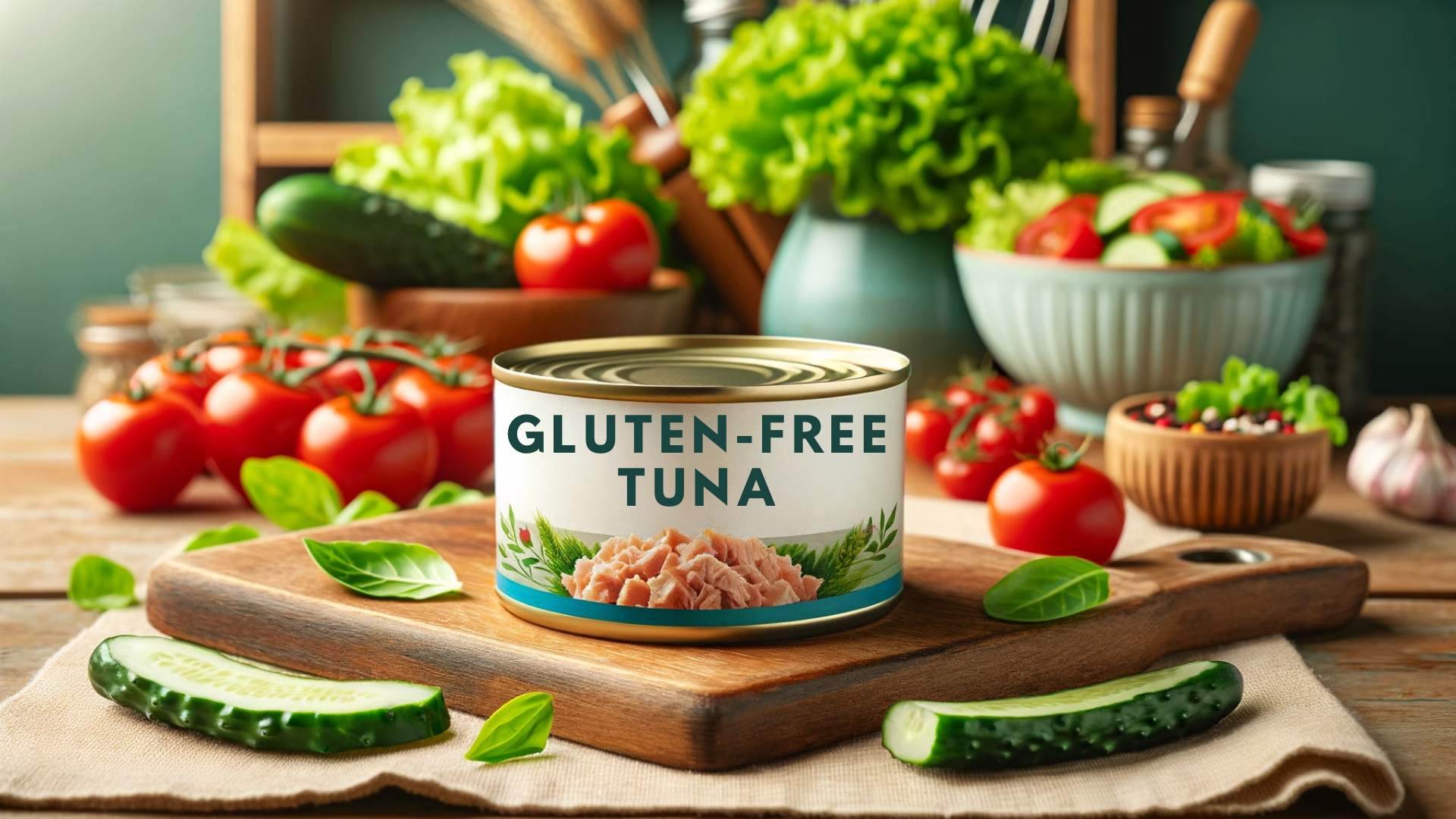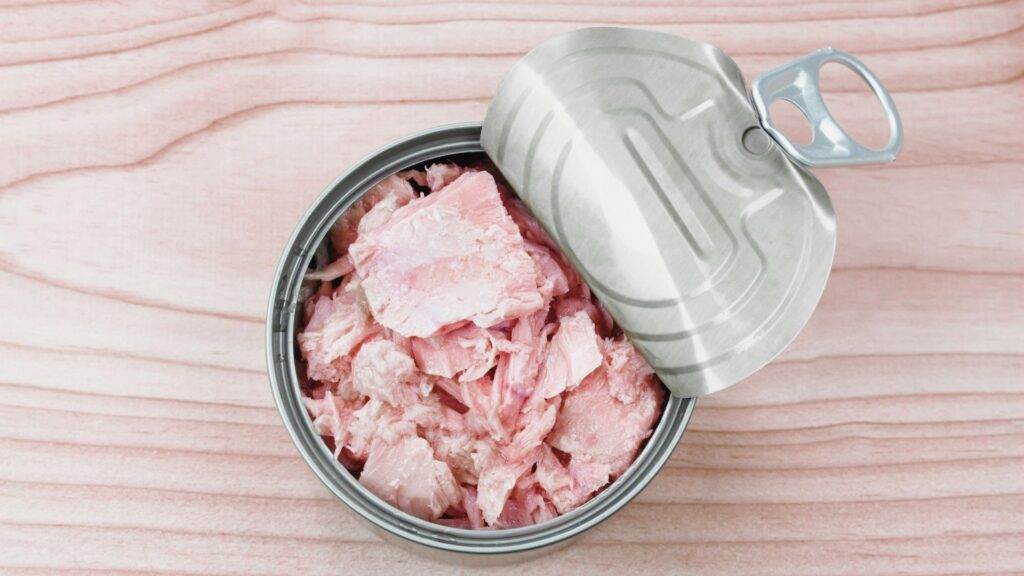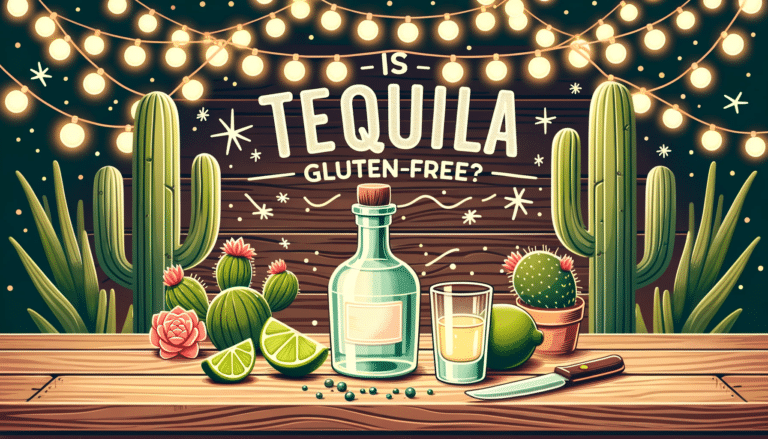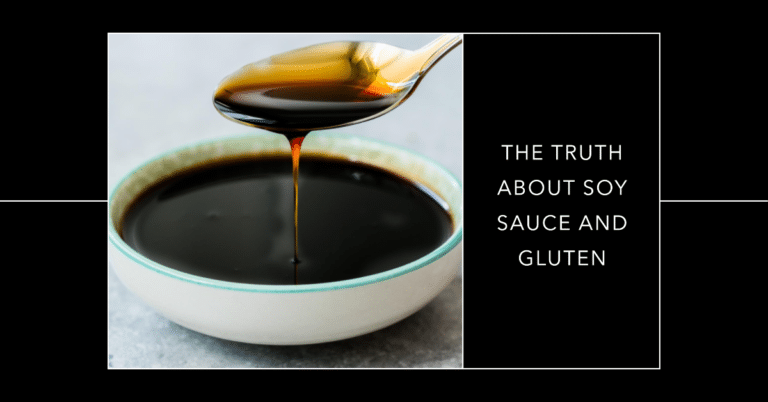Is Tuna Gluten-Free? Spoiler Alert: There’s a Catch!

It’s a question many gluten-aware shoppers have pondered in the canned goods aisle: Is tuna gluten-free?
On the surface, the answer should be simple, right?
But as anyone navigating a gluten-free diet knows, simplicity isn’t exactly our bread and butter—or should I say, our tuna sandwich?
Fresh from the ocean, tuna is indeed gluten-free – a protein-packed ally for those with celiac disease or who are gluten-sensitive. ‘The catch’ is that you shouldn’t make assumptions – gluten-containing ingredients such as seasonings or thickeners in canned tuna may render it unsafe for those who can’t tolerate gluten.
Let’s ‘dive in’ and explore this topic further, shall we? There’s more below the surface when it comes to canned tuna and gluten.
Is Tuna Gluten-Free? – A Deep Dive Into the Facts

I must admit I do love a classic tuna sandwich. Usually with a little mayo or salad cream, because nobody likes dry tuna!
Sometimes, I’ll even get creative and mix tuna into a zesty pasta dish or salad for dinner. Fast, budget-friendly, and simple!
But when I was diagnosed as a celiac, suddenly every ingredient label became a source of scrutiny—tuna included. Is it really gluten-free?
Thankfully, the answer is yes, tuna is gluten-free for the most part. Just remember that you’ll still need to check the product label for hidden sources of gluten.
Decoding Labels: Your Tuna Can Tell-All
Label literacy isn’t just a skill—it’s an essential part of the gluten-free lifestyle.
When you’re hunting for gluten-free tuna, the label is your treasure map. Words like natural flavors or soy might seem innocuous, but they can sometimes conceal gluten in their depths.
That’s why it pays to take the time to check labels thoroughly. Because, as the old saying goes – it’s better to be safe than sorry!
Need help deciphering labels? Check out my guide on how to know if something is gluten-free.
The Cross-Contamination Conundrum
Oh, cross-contamination, the invisible menace that haunts so many gluten-free shoppers. It’s like invisible gluten graffiti on what should be a pristine, gluten-free surface. You can’t see it, but it’s there…waiting.
Cross-contamination happens when gluten-free products like tuna are processed on shared equipment or in a shared facility with gluten-containing products—making the leap from safe to potentially harmful.
Even tiny amounts of gluten can cause issues for those with celiac disease or gluten sensitivity. Not fun.
The best bet for avoiding this pesky contamination problem is to ask questions when dining out and check labels meticulously – as if your life depended on it.
While this level of care often means spending a minute or two longer to read labels and research brands, gluten-free peace of mind is priceless for those managing medical dietary needs. It’s worth investing extra effort to safeguard your health.
Shopping Smart: Gluten-Free Tuna on a Budget
Gluten-free on a budget can sound like a fantasy, but with some know-how, the dream can become a reality.
Budget supermarkets have stepped up their game, albeit not entirely (I’m looking at you Aldi & Lidl, with your lack of gluten-free bread!).
Remember the bigger picture: It’s not just about the price on the shelf—it’s about investing in your health. And guess what? That investment can still be quite wallet-friendly.
Embrace store brands, look out for sales, and don’t shy away from buying in bulk when the gluten-free labeling checks out (Costco is perfect for this!).
Gluten-Free Tuna: Your Kitchen Staple
Tuna is a versatile food item in your kitchen. It’s ready for any meal, easy to store, and can transform into something new with just a few added ingredients. Oh, the possibilities!
Plus, it’s quick to prep for hectic mornings—whether you’re assembling a protein-packed salad, topping a crunchy gluten-free cracker, or mixing it into a zesty pasta dish or casserole.
Tuna to the rescue when you’ve got no time for elaborate recipes!
And for those focused on reducing food waste, know that your canned tuna can last for up to 5 years if stored properly in a cool, dry pantry. Now that’s longevity!
While fresh tuna has its merits, you can feel good about keeping canned varieties on hand for gluten-free flexibility.
It’s a fun way to discover new flavorful takes on this dietary staple and keep your meals exciting even within medical restrictions. Tuna doesn’t have to get boring.
Further Reading: Diving Deeper into Gluten-Free Living
Ready to explore the gluten-free seas beyond the shores of tuna? Our journey doesn’t end here.
There’s a whole world of gluten-related knowledge, questions, and stories out there:
| Article | Description |
|---|---|
| Is Curry Gluten-Free? | Uncover the spicy intricacies of gluten-free curry in this enlightening guide. |
| Lack of Gluten-Free at Budget Supermarkets | A guide to my frustrations in finding gluten-free essentials like bread in budget supermarkets. |
| Why Isn’t Soy Sauce Gluten-Free? | Uncover the hidden gluten in soy sauce and arm yourself with knowledge for safe dining out. |
Disclaimer: This content is based on my personal experience as an individual diagnosed with celiac disease and IBS (Irritable Bowel Syndrome) who follows a strict gluten-free diet. This does not constitute medical advice. Please consult a medical professional, nutritionist, or qualified dietitian for personalized, professional advice.






